4 October, 2003
Snow Forts
I spent the last two days at Happy Camper School. Before anyone is allowed out on the helicopter, you have to go through a field safety training course. This includes spending the night outside to learn survival skills.
We were a group of 15 people, doing all sorts of different projects. There was a surveyor, a mechanic, a penguin rancher, a fish scientist, a carpenter, and even a helicopter pilot. I was the only balloon person, the rest of my group had done this course before. The instructor was a knowledgeable outdoorsman, with plenty of winter camping experience. We loaded the Nod-well, a torturously slow vehicle built for the Navy many years ago that puts you to sleep as it rocks. We drove 45 minutes out to the ice shelf and set up camp there. We were instructed on how to light a stove, how to build a snow wall, and how to set up a Scott tent. We were given dehydrated food and left for the rest of the day and night. It was a good time to enjoy the cold, the blowing snow made you feel you were really far away from civilization, but in reality it was a short but cold walk back if we had opted out. I slept in a good mountain tent with toasty toes. On the advice of others, I changed my socks before going to sleep, and that made all the difference, the bunny boots sweat and make your socks wet which can cool your feet fast if left on. In the morning we went through survival scenarios. We learned to set up a field radio and antenna. The weirdest thing was when they stuck buckets on our heads and told us to find a lost person using only ourselves and a fifty foot rope. If you have not been tied together with ropes before, it presents a very interesting communication challenge when all you can do is tug. All in all, it was a happy camp, and a great excuse to go outside.
We launched another large balloon over the weekend and tomorrow we are scheduled to pick up balloons by helicopter. That will be interesting and fun!
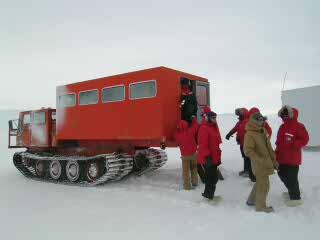
Loading up the Nod-Well

Marching out to camp
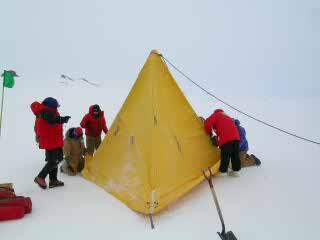
Setting up a Scott tent. This shape of tent can survive very high winds, and it can hold four people. There is a small vent at the top, the entrance is snow proofed with canvass.

Cutting a snow block with a saw. They are much easier to lift out in one piece than I would have imagined.

A completed wall, note the direction of the wind.
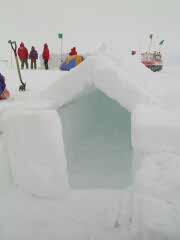
This finely made trench was built by the carpenter. It is a great way to make a shelter if you do not have a tent.

The view of our camp.

Another way to build a shelter is to dig a deep trench and then go sideways. This shelter has two sleeping berths. It is a warm and quiet place to be in a storm but it takes a considerable amount of time and energy to dig so much snow.

Me hauling some of our gear in the morning
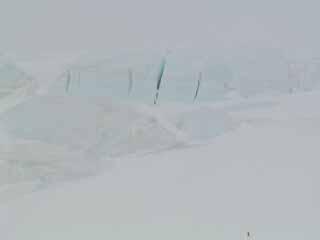
A picture of the ice cracks we see from camp.
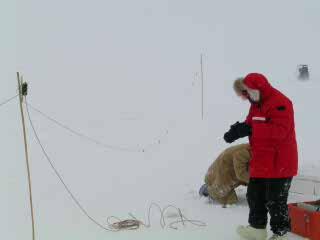
Setting up the field radio. To tune a station you shorten the length of the antenna. This radio is capable of reaching the South Pole.
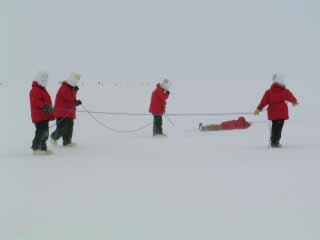
Trying to locate a "lost" person using a rope. The buckets are there to simulate a white-out. In a true white out you may not see past your arms. This may look silly but it was a real eye opener, mostly because it is difficult to communicate to everyone on a rope. It is quintessential network theory in action.
Contact the TEA in the field at
.
If you cannot connect through your browser, copy the
TEA's e-mail address in the "To:" line of
your favorite e-mail package.
|
